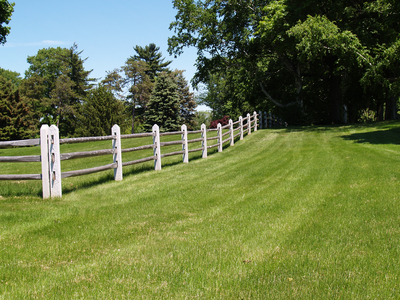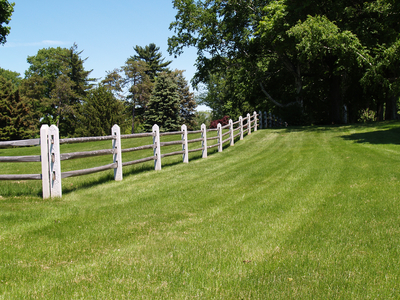Whether you’re a farmer or rancher, one of your biggest investments runs around on four legs. A house in the country might be home to the family horse while the spread down the road might raise cattle. Regardless of the size of the operation, maintaining a good fence is a vital part of protecting your livestock. Building the right enclosure to match the animal is a smart start; different animals need different fencing. Understanding those differences makes fence repair and maintenance less of a chore.
Know Your Livestock
Any kind of fence is suitable for cattle, but high-tensile fencing is the least expensive enclosure for pastures. Horses need boundaries that they can see, so traditional wood fences are the best choice. Woven wire works well too, but it must be topped with a visible border. Both horses and cattle need fencing that’s at least 4 feet high. Raising pigs doesn’t require a tall fence, but the enclosure needs deep posting for strength. Barbed wire strung between the bottom of the posts discourages rooting and escaping. Sheep are the easiest to fence, but they’re also the easiest target for predators. Electric high-tensile fencing is vital to keep flocks safe from coyotes and dogs.

Know Your Material
High-tensile fences are the least expensive to build, and they easily convert into electrified enclosures. The name comes from the tensile strength and flexibility of the wire that allows it to withstand the weight of cattle without breaking. Wood fences are attractive around a property or pasture, and building them with pressure-treated wood is a good investment. Woven wire fencing is easy to install, comes in a variety of patterns and works well with all livestock. Barbed wire is harder to work with, but it’s very durable and best for handling heavier animals. Every type of fencing requires solid posting, and pressure-treated wood is always your best choice.
Know Your Repairs
Over time, weather and livestock will stretch fence wires, so check them at least twice a year. When wires break or lose their elasticity, repair them right away. Make a loop at the end of the broken wire, bend it back and clamp it shut with pliers. Slide the repair wire through the loop, and then double it back on itself with the same loop closure. Several good twists will secure the break, and you must repeat this for all the wires in a strand. A fence stretcher makes the job easier and cuts down on the time involved in extensive repair jobs. This same technique works on woven and barbed wire, and you should always wear gloves for protection.
Don’t ever attempt repairs on an electric fence; these are not DIY projects, so always call in a professional. When fence repair is a bigger job than you want to tackle, check online for fencing pros who can save you time and work. Their expertise and new technologies can solve old problems so that you can keep your four-legged investments safe behind a strong fence.
This article was written by Wilson Kraut, a farm owner. He gets his fence repair services from the fencing experts at Total Equine Fencing. They are located at 45 Pine Ridge Road Erin, ON N0B 1T0 Canada ?+1 519-820-7315.
Strong Fences For Four-Legged Investments

